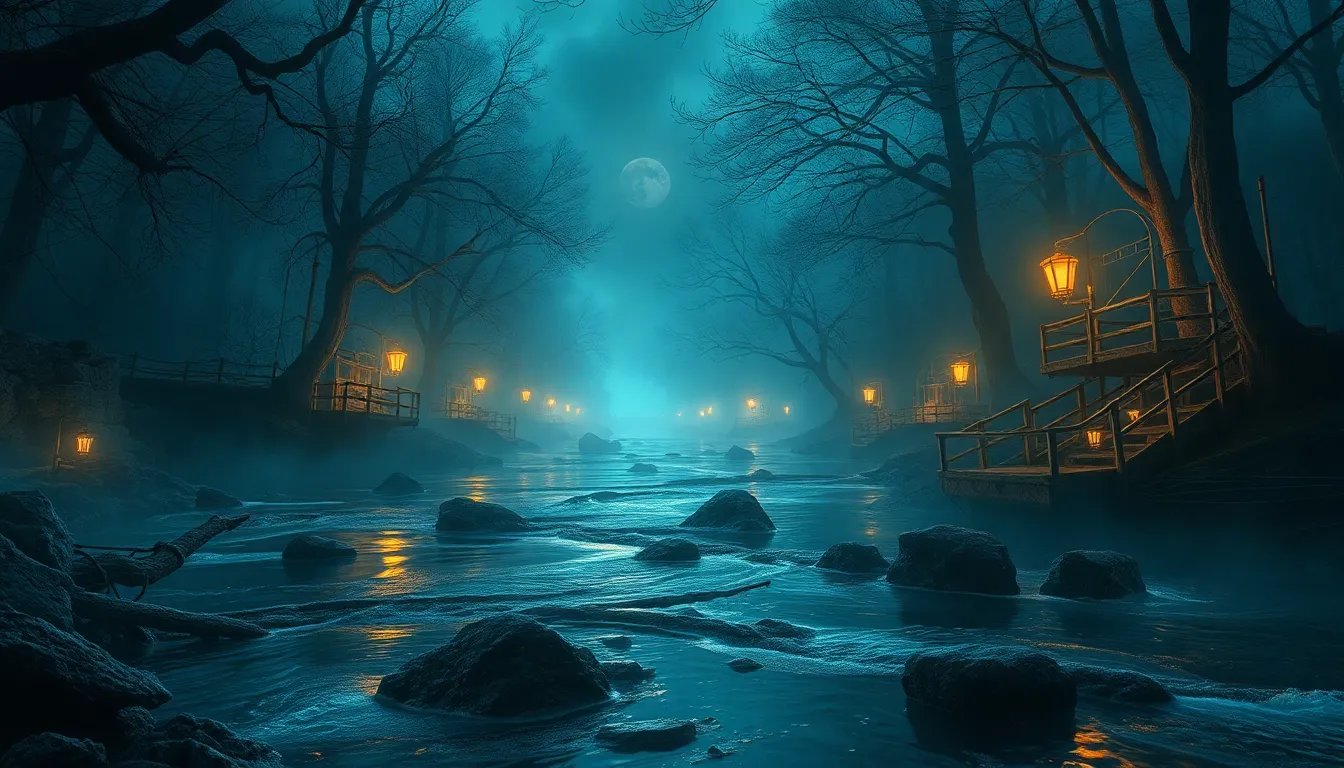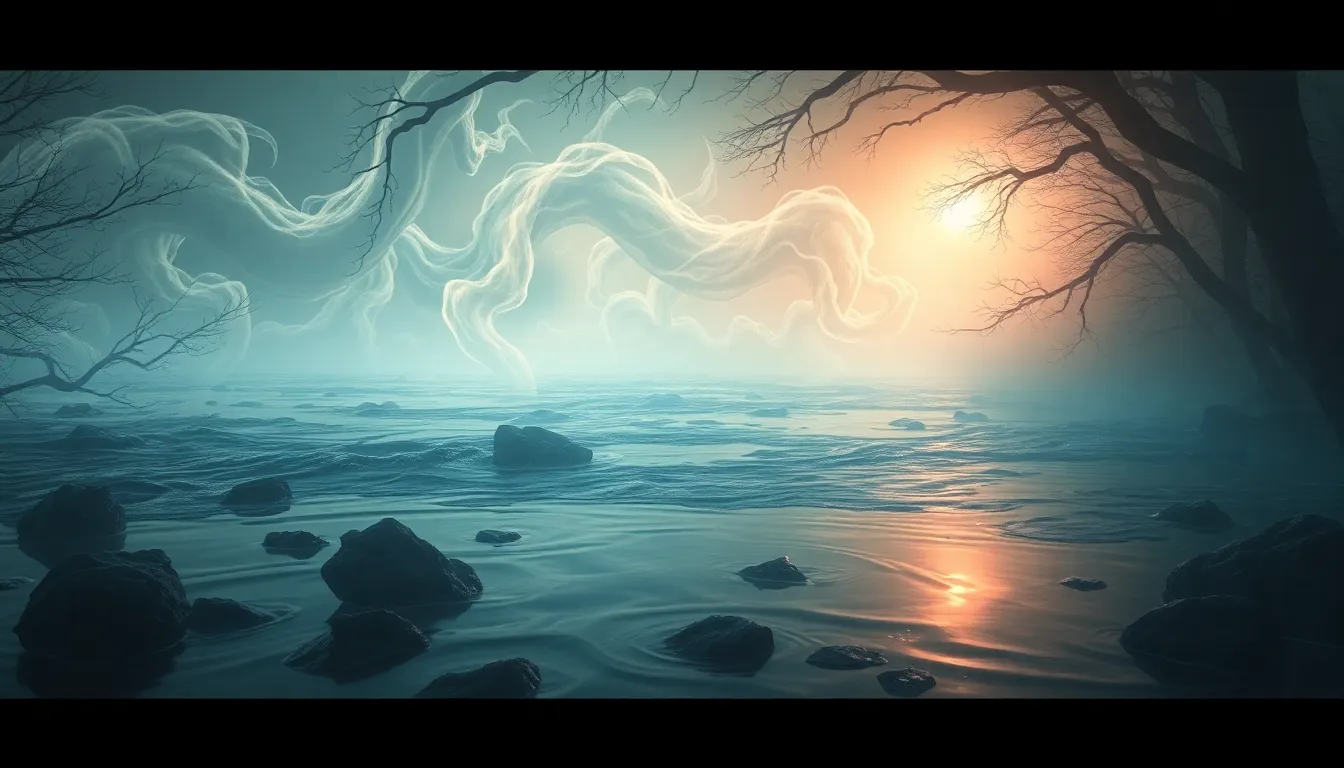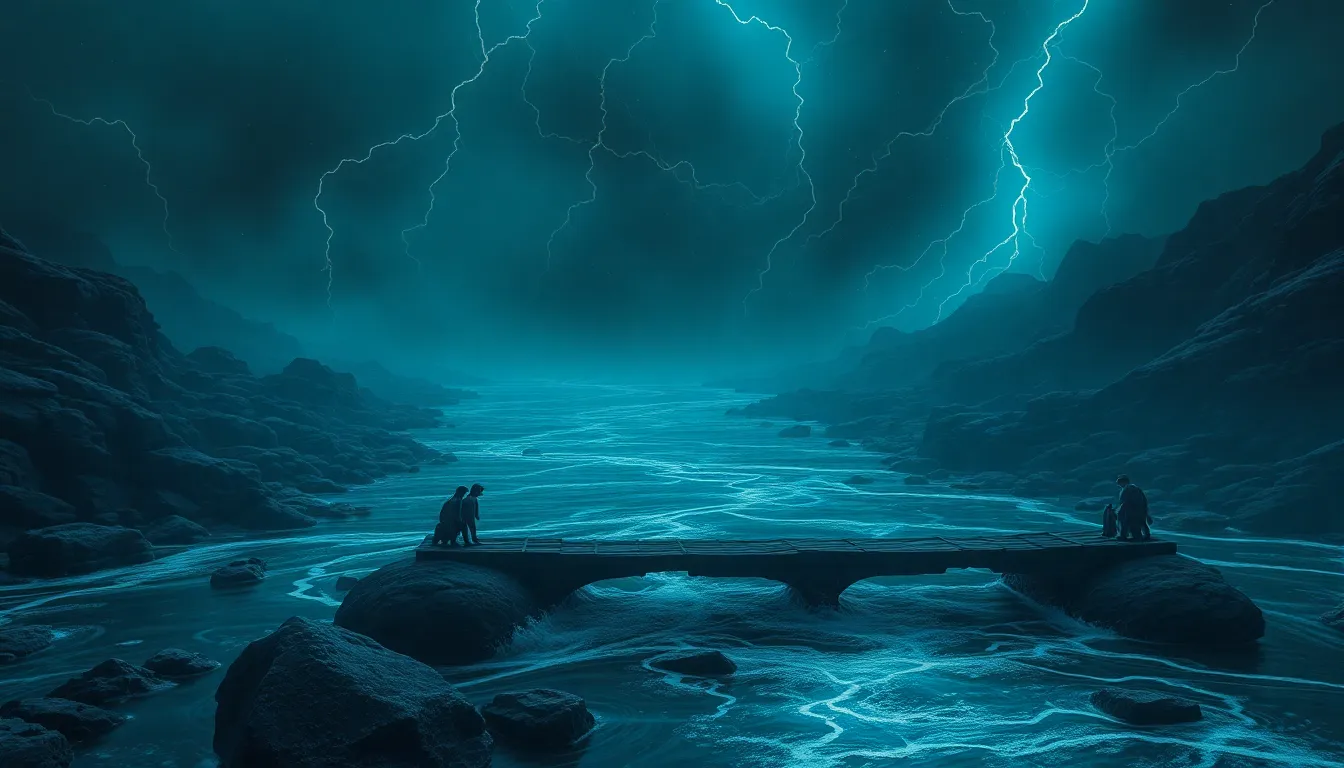The River of the Spirits: Myths of Ghostly Encounters
I. Introduction to the River of the Spirits
The River of the Spirits is a concept that resonates across various cultures, often symbolizing a boundary between the living and the dead. This river serves as a metaphorical and sometimes literal conduit for spirits, embodying the transition from life to the afterlife. Its significance lies in its ability to connect diverse mythologies, creating a tapestry of ghostly encounters that reflect humanity’s fears, beliefs, and hopes regarding death.
Throughout history, stories of ghostly encounters along rivers have been told, each narrative steeped in cultural significance and moral lessons. This article aims to explore these myths and stories, shedding light on how they shape our understanding of life, death, and the ethereal world that lies beyond.
II. Historical Context: The Origins of the River Myth
Rivers have long been seen as spiritual conduits in many ancient civilizations. For instance, the Egyptians revered the Nile, believing it was a pathway for the souls of the dead. Similarly, the Ganges River in India is considered sacred and is thought to purify the spirits of those who bathe in it.
Across different cultures, rivers have played a crucial role in mythology:
- Mesopotamia: The Euphrates and Tigris rivers were seen as the veins of the earth, carrying life and death.
- Greco-Roman: The River Styx was believed to separate the living world from the Underworld, with souls crossing its waters guided by Charon.
- Native American: Many tribes viewed rivers as the spirits of ancestors, who guided and protected the living.
These beliefs have influenced countless legends and shaped the understanding of rivers as not just physical entities, but as realms that connect different states of existence.
III. Cultural Variations: Global Perspectives on the River of the Spirits
Different cultures interpret the River of the Spirits through their unique lenses, resulting in a rich diversity of stories and beliefs.
A. Indigenous beliefs and stories from North America
In many Indigenous cultures of North America, rivers are seen as living entities. For example, the Ojibwe believe the waters hold the spirits of their ancestors, who guide the living. Stories abound of encounters with these spirits, often serving as cautionary tales about respecting nature and honoring the past.
B. European folklore and the River Styx
The River Styx is perhaps the most famous river in Western mythology, serving as the boundary between Earth and the Underworld. In ancient Greek mythology, it was said that the dead would pay Charon to ferry them across the Styx, emphasizing the river’s role as a threshold between life and death.
C. Asian interpretations, including the Chinese and Japanese views
In Chinese mythology, the Yellow River is often associated with the souls of the deceased, believed to wash away sins. Similarly, in Japan, the Sanzu River is thought to be a spiritual river where souls must cross, facing trials that reflect their deeds in life.
IV. Common Themes in Ghostly Encounter Stories
Ghostly encounter stories often share common themes that reflect deep-seated human fears and beliefs.
A. The nature of the spirits associated with the river
Many spirits associated with rivers are portrayed as benevolent guides or vengeful entities, depending on the cultural context. These spirits often embody the characteristics of the river itself—serene yet powerful.
B. The symbolism of water in ghost stories
Water symbolizes cleansing, life, and sometimes chaos. In ghost stories, it often represents the unknown, with rivers acting as both a literal and metaphorical pathway to the afterlife.
C. Recurring motifs: guidance, warnings, and lost souls
Common motifs include:
- Guidance: Spirits helping the living navigate their lives.
- Warnings: Encounters that serve as precursors to danger.
- Lost souls: Those who cannot find peace often linger by the river.
V. Famous Legends and Tales of the River of the Spirits
Countless legends depict ghostly encounters along rivers, each with their unique narratives and moral lessons.
A. Notable ghostly encounters from folklore
One such tale is that of the Lady of the River, a common figure in many cultures, often depicted as a woman who drowned and now haunts the riverbanks, seeking justice or closure.
B. Modern retellings and their impact on popular culture
Modern adaptations of these legends have permeated films, literature, and television, reflecting society’s ongoing fascination with the supernatural.
C. Analysis of specific stories and their moral lessons
Many river ghost stories carry moral lessons, such as the importance of respecting nature, acknowledging the past, or understanding the consequences of one’s actions.
VI. The Psychological Aspects of Ghostly Encounters
The phenomenon of ghostly encounters can often be examined through a psychological lens.
A. The influence of fear and belief in shaping ghost stories
Fear of the unknown often fuels ghost stories, with personal beliefs shaping the narratives surrounding ghostly encounters.
B. The role of collective memory and trauma in ghostly encounters
Communities may share ghost stories that reflect collective trauma or historical events, leading to a shared cultural memory that is passed down through generations.
C. Psychological explanations for reported experiences along the river
Many ghostly encounters can be attributed to psychological phenomena, such as pareidolia or the power of suggestion, which can create vivid experiences in the minds of individuals.
VII. The River of the Spirits in Art and Literature
Artists and writers have long been inspired by the myths surrounding the River of the Spirits.
A. How artists and writers have interpreted the river myth
From paintings to poetry, the river myth has been a muse for many, capturing the duality of life and death through evocative imagery and narrative.
B. Analysis of famous artworks and literature inspired by ghostly encounters
Works such as Dante’s “Inferno” and various paintings depicting the River Styx illustrate the river’s significance in exploring themes of morality and afterlife.
C. The impact of these representations on cultural understanding
Such representations have shaped cultural perceptions of death and the afterlife, influencing how societies process grief and loss.
VIII. Modern-Day Encounters: Ghost Tours and Paranormal Investigations
In contemporary culture, the River of the Spirits has found new life through ghost tours and paranormal investigations.
A. Popular tourist destinations along the River of the Spirits
Locations like the banks of the Mississippi River in the United States and various haunted rivers in Europe attract tourists eager to explore their ghostly lore.
B. The rise of ghost tours and their significance in contemporary culture
Ghost tours have become a popular way for people to engage with local history and folklore, blending entertainment with education.
C. Accounts from paranormal investigators and their findings
Paranormal investigators often report strange occurrences along these rivers, contributing to the ongoing fascination with ghostly encounters.
IX. The Role of Technology in Documenting Ghostly Encounters
Advancements in technology have transformed how ghost stories are documented and shared.
A. The impact of social media and digital storytelling
Platforms like Instagram and TikTok allow individuals to share their ghostly experiences, creating a digital archive of modern folklore.
B. Use of technology in paranormal research
Tools such as EVP recorders and infrared cameras have made it easier for investigators to capture evidence of ghostly presences, leading to more rigorous research.
C. Ethical considerations in documenting ghost stories
As stories are shared, ethical considerations arise regarding the representation of individuals’ experiences and the potential for exploitation.
X. Conclusion: The Enduring Legacy of the River of the Spirits
The River of the Spirits continues to captivate our imagination, symbolizing the eternal connection between life and death. Through myths, legends, and personal encounters, it serves as a reminder of our shared humanity and the mysteries


